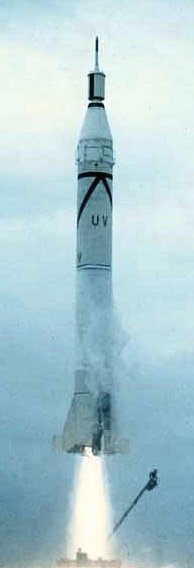Today’s space history entry provides a glimpse of how space launch operations improved in the first 20 years of the space age.
First, 55 years ago today — March 5, 1958 — we attempted to launch the Explorer 2 satellite from Cape Canaveral on a Jupiter C rocket. The vehicle lifted off without incident (which some in the industry might consider a launch success), but its upper stage failed and the satellite did not reach orbit.

(Explorer 2 launch. US Army image from Wikimedia Commons.)
Ten years later, on March 5, 1968, the small scientific satellite SOLRAD 9 launched aboard a Scout vehicle from the Wallops Flight Facility in Virginia. SOLRAD 9 was also known as Explorer 37, and it operated successfully until 1974.
And then 10 years later still — on this date in 1978 — Landsat 3 launched atop a Delta rocket out of Vandenberg AFB, with the Oscar 8 amateur radio satellite along for the ride.
So, on this date in space history we had three launch attempts, each a decade removed from another, from three different launch bases, resulting chronologically in a failed mission, a successful mission, and a successful multi-satellite mission. That seems like progress.








